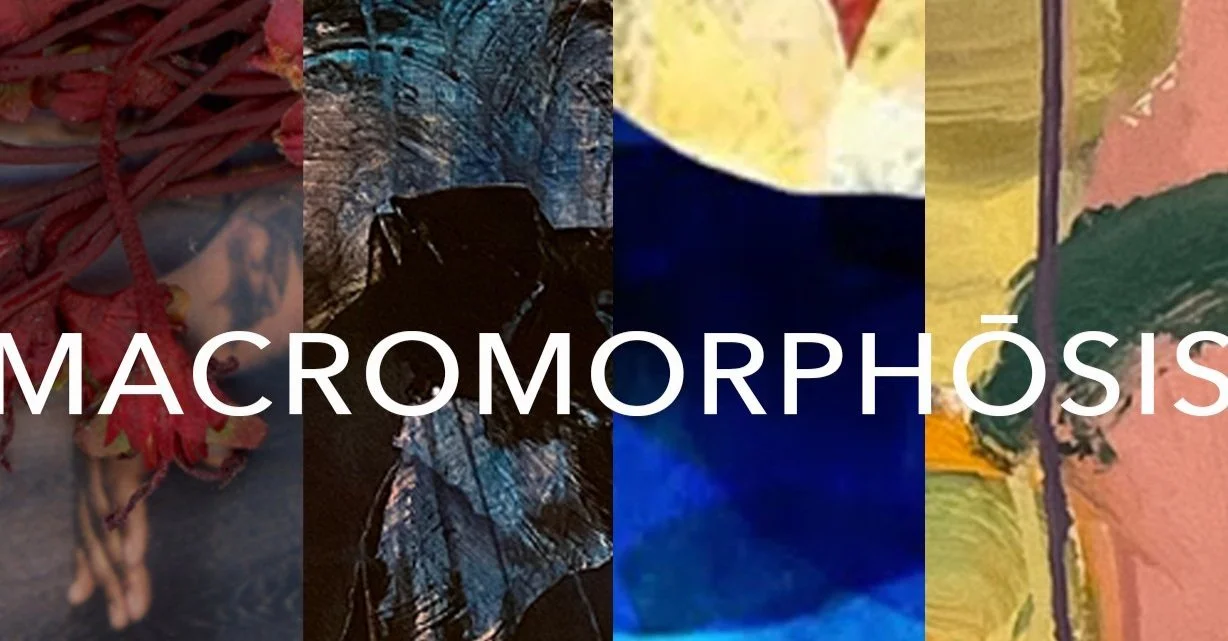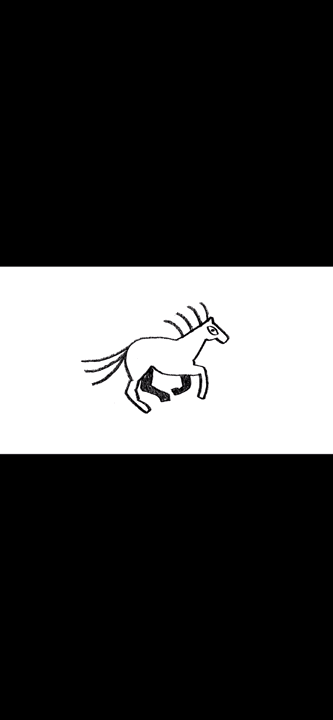February 23 – March 31, 2023 | The Brant Gallery at MassArt
EXHIBITION EVENTS
Thursday February 23, 5:30pm-7:30pm — Opening Reception
Tuesday Feb 28, 2:00pm — Conversation with artist, Ohara Hale, and curator/artist, Ava Fedorov (Zoom)
Wednesday March 1, 6:30pm — Artist talk with Roland Longstreet (in person)
Wednesday March 15, 6:30pm — Artist talk with Nakemiah (Kiki) Williams (in person)
Special programming in conjunction with the WorldWide Climate & Justice Teach-In March 22 - 31, 2023.
The Brant Gallery is located in the Massachusetts College of Art and Design: 621 Huntington Ave, Boston, MA
Gallery Hours: 10am-7pm, every day
Natalie Diaz and Ohara Hale present LAKE LOOP, a collaborative poetic animation. Ava Fedorov presents SHADOWTIME & EPOQUETUDE, a large-scale diptych painting. Roland Longstreet presents INNER STUDY a series of abstract figurative paintings. Nakemiah (Kiki) Williams presents parts two new series of photographic collage prints, entitled FLOWER BUD and ROOTS.
More information: about the artists, exhibition image list, and media kit. Contact: afedorov@massart.edu
Informed by the Greek terms makros (abnormally large, on a large scale) and morphōsis (a forming, a shaping), this word has been invented to address and contextualize the massive, unrelenting, and overwhelming times of change that define our current era on earth. Fueled by a chaotic inertia, social-ecological-spiritual-political landscapes become unrecognizable. In this exhibition, five artists imbue deeper and expanded meaning to the idea of macromorphōsis through work that confronts, embraces, heals from, and takes agency within transformation. The show brings together artists from Honolulu, Tacoma, Phoenix, Montreal, and Boston, within the disciplines of painting, photography, animation, mixed media, and poetry.
CURATORIAL STATEMENT:
It feels as though we are living in an age where time is compressing, intensifying. And that the defining character of these furiously careening times is chaotic and transformational change. Change is such a complicated and nuanced concept. It is something to fear and to embrace. It is a tremendous hurdle and also a pathway forward. It is unpredictable yet permanent yet ceaseless. In this exhibition, the idea of change is explored via the lens of transformation. The very title of the show, Macromorphōsis, uses the transformative and inventive power of language to recontextualize the way we understand this historical and geological inflection point. As we look at the various artistic explorations defining transformation, one thing becomes clear: the very nature of transformation is to reveal. Through this revelation we find new truths, new understandings, new horizons, even as they lead us through landscapes of memory, history, brokenness, and healing—into futures, as yet, undefined.
The works in this show come together in a way that is reflective, cyclical, and reciprocal. All use abstraction and narrative in depicting the transformation of the “body” and of “nature” (I use quotation marks here in acknowledgement that these entities are, in actuality, one and the same). Nakemiah Williams’ photographic print series, Flower Bud and Roots, express transformation as the morphōsis of a body into and within nature as a way of healing from the trauma of sexual assault and the objectification of the Black female body. The incorporation of organic materials—flowers, mosses, and leaves—creates a poetic narrative that transforms the experience of violence and loss of innocence into self-empowerment and resilience via the symbolic language of nature.
Ava Fedorov’s paintings, Shadowtime & Epoquetude, depict transformation from the perspective of nature’s ecological systems, where landscape becomes one body woven of many bodies. The morphōsis of these bodies is embedded and abstracted under the trauma of climate chaos, extinction, and displacement. In this diachronically expressed work, we understand ourselves as mirrors of our environment: as the landscape is assaulted, so too, do we suffer existentially. The disconnect of understanding ourselves as nature is the same disconnect that enables extractive, colonizing, racist cultures to devalue non-western and feminist perspectives.
Natalie Diaz’s poem, lake-loop, and Ohara Hale’s animation portray the cyclical and perpetual morphōsis and fractures of the human/animal body/spirit into earth—bodies of water and of land. In this work, the structural and limiting aspects of human language and human time (the rift) move toward an original state where the landscape creates its own language that, in turn, creates us, in a kinetic discontinuity. The lake is both a visceral reality and a symbol of forming—something that is experienced simultaneously from within itself and from outside of itself. Ultimately, and even in a state of ruin, there is joy—and that is an act of radical activism. And it is beautiful.
Roland Longstreet’s Inner Study paintings take the immediacy of the recognition of human portraiture and render within it a universality through abstraction. The lucid materiality of the dripping, viscous swipes of color draws attention to the bodily, physical existence of paint on the surface of canvas while also emphasizing the nebulous, structureless depth it metaphorically represents. The inward and outward pulse of these paintings speaks to the ideas of transformation as a morphōsis of reflection and receptivity, silence and cacophony, violence and tenderness, the evanescent and the eternal.
Within the contemporary context of the theme, Macromorphōsis, it is also critical to represent artists that have been historically underrepresented in the art world. This exhibition seeks to celebrate and empower marginalized voices. Only through inclusive representation can we have a clear, broad, and unobstructed understanding of the vast range of voices and visions that are shaping the evolution of art—not only in our times, but throughout all time. Through diverse representation, emerging generations can identify with these artists, see themselves within this world, and feel empowered through a proactively inclusive environment. Of the five artists involved in this project, three identify as BIPOC, two identify as LBGTQIA2S+, and four identify as women.
The work of these artists responds to the concept of Macromorphōsis through their unique identities/points of view. Their art also addresses the outsized share of physical, emotional, and spiritual trauma that this overwhelming transformation imposes upon those without privilege in western, capitalist power structures. Through their work, the artists take agency by confronting the trauma and the systems that perpetuate trauma, thus, shifting the narrative and driving transformation instead towards an empowered and hopeful future.
— Ava Fedorov, Macromorphōsis curator and artist, 2023
This exhibition has been made possible with support from Studio Foundation and the Office of Justice, Equity, and Transformation at the Massachusetts College of Art and Design.
The Brant Gallery and MassArt are located on land that is the territory of the Massachusett, Pawtucket, and their neighbors the Wampanoag and Nipmuc Peoples, who have protected and stewarded this land for hundreds of generations. We recognize that this acknowledgement is insufficient and cannot undo the violence, violation, and disrespect that has occurred and still continues to occur against Indigenous people, land and water. We affirm the sovereignty of the citizens of these Nations and extend our respect to those who live here today and honor their ancestors who have lived here for over five hundred generations.
The Curatorial Team would like to thank Ellen Adams, Clint Baclawski, Reid MacPherson, Gina Mudge, Gene Preble, Elexis Ruiz, Trader Joe’s in Coolidge Corner, and Home Depot in South Bay (Kevin Redvear, Omar Alcantara, Donte Lewis, Kay Miller and Kenrol Gopaul).
CURATORIAL TEAM:
Ava Fedorov, artist and curator for Macromorphōsis
Helen Miller and Joanna Tam, co-curators for the Brant Gallery
Emily Canales, curatorial assistant
Thien Nguyen, curatorial assistant





